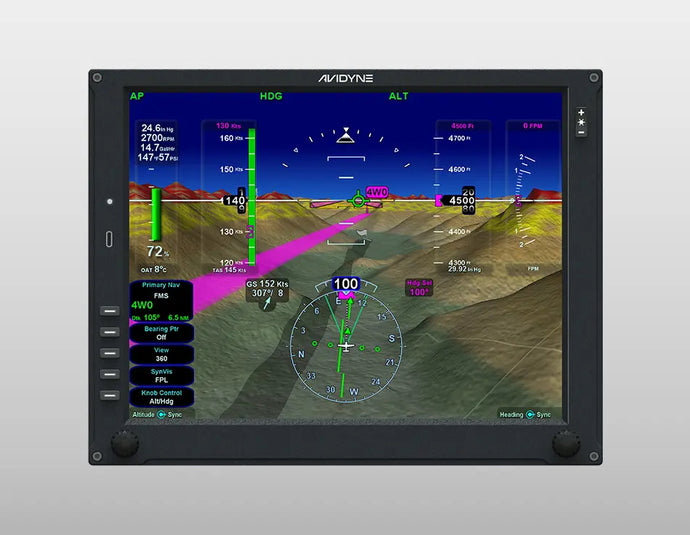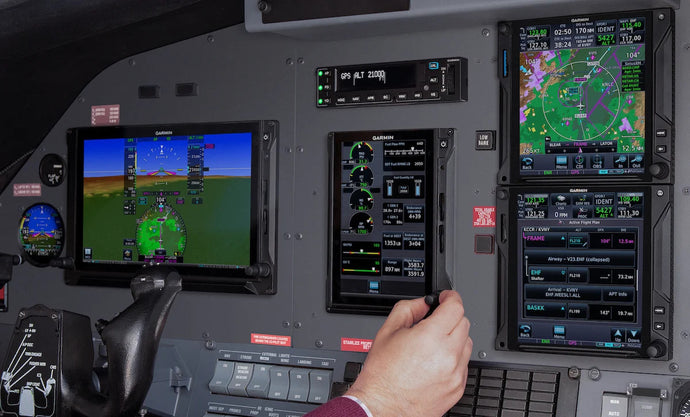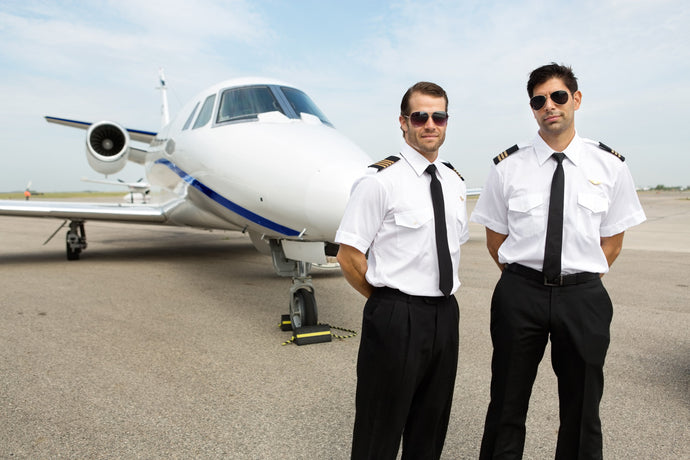
Flying in IMC, descending blindly at 100 knots down to 200 feet AGL, makes us all sit up a little straighter. However, it’s not just the low approach in a storm that gets our hearts pumping, nor is it a traffic advisory when you can’t see more than three miles ahead that brings beads of sweat down our faces. These are times we remember how today’s avionics let us see another day and we find at shutdown we’re patting the glare shields like a Golden Retriever’s head.
Modern avionics help us see where we’re not looking, look when we’re not focused, and focus on the most serious threat at hand – automated tasks happening a thousand times per second.
Take a typical weekend flight around Southern California. Add low visibility, high traffic areas, mountainous terrain, and maybe some cloud build-ups – all things you could typically find without even departing Class B airspace. Terrain, traffic, weather; all the elements are trying to ruin your day. Throw in an aircraft malfunction and a case of ‘get-home-itis’ in the mix, and your deck is stacked with little margin for error. If your co-pilot is a state-of-the-art computer that can also handle the controls, you’re free to use your superior pilot judgment – a competency even your computerized co-pilot envies.
Day or night, IMC or VMC, just seeing all that data on the panel relaxes a pilot and lets his mind focus on tasks in sequence. The knowledge built into a modern avionics package brings decades of experience and superhuman senses to the cockpit. We all know experience makes a safer pilot, and in today’s age, we enjoy the ability to install experience into your flight deck.
Here are the top six ways avionics make your flying safer:
1) ADS-B Traffic
Even though air traffic control handles traffic separation under IFR, during visual meteorological conditions (VMC), you’re still on the hook for seeing and avoiding traffic. Using ADS-B helps you identify potential traffic conflicts much earlier, so you have lots of time to make adjustments.
2) Terrain Proximity Warnings
Systems like TAWS can be an absolute lifesaver when visibility is cut short while descending below terrain or obstructions. Few things will grab your attention quite like TAWS shouting “TOO LOW — TERRAIN!”
3) Early Detection of Abnormalities
Today’s avionics monitor your aircraft’s systems, providing warnings or even trends as things go wrong. The key here is to give you as much time as possible to act before things get critical. Even in task-saturated environments, you won’t be able to miss the warnings thanks to both visual and audio alerts.
4) Approach Procedure Visualization
The value of this safety feature is never more evident than when the Southern California fog rolls in. With approach procedure visualization, not only can you see your position on an approach, you know your time and distance to the next fix, and in most cases, when you’ll hit your next altitude.
5) Autopilot
It’s a tool, not a crutch — use it in good health. Vestibular illusions can be lethal and have been the cause of some high-profile fatalities over the years. Engaging the autopilot can significantly mitigate that risk when maneuvering in the clouds. It also frees you up to monitor your systems and navigation and think about the “big picture” while you’re flying.
6) NEXRAD/XM/ADS-B Radar
When most of us think of XM radar, we think of tactical navigation around storm cells, but the real value in terms of safety comes in your ability to pick routes that will keep you well clear of convective weather. With on-board radar and land-based mapping, you have a clear picture of what to avoid.











